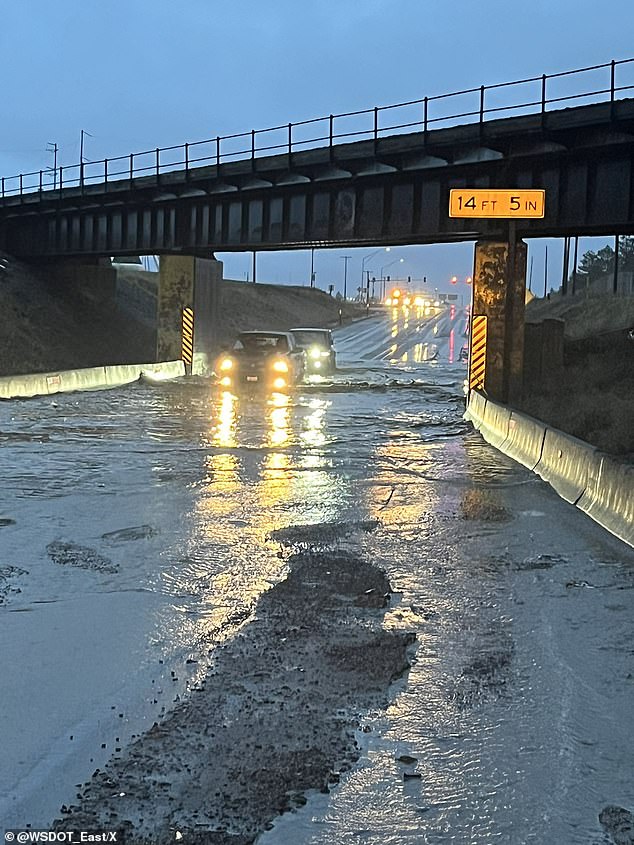
"Flood Alerts in Five States as Most of U.S. Bakes Under Severe Heatwave"
Powerful Storm Batters Pacific Northwest, While Rest of U.S. Basks in Spring-like Warmth
[Image: Storm flooding in Washington]
A storm system is unleashing heavy rain, damaging winds, and flood risks across the Pacific Northwest this week, impacting Washington, Oregon, California, Montana, and Idaho. The region, still recovering from a weekend atmospheric river event, faces collapsing trees, power outages, and up to 16 inches of rain in some areas.
Flood Threats and Atmospheric River Impact
The storm follows a weekend deluge that dumped 2–4 inches of rain on coastal regions, triggering flash floods. Combined, the back-to-back systems could deposit 3–8 inches of rain in lowlands and over 16 inches in mountains. “River flooding is a major concern, especially with melting snow adding to runoff,” warned AccuWeather meteorologist Jacob Hinson. The National Weather Service (NWS) has issued coastal storm and gale warnings, with wind gusts up to 80 mph along the coast and 40–60 mph in cities like Seattle.
[Image: Storm path map]
Flood alerts span major cities like Seattle and Portland, with high-risk counties including Washington’s Spokane and Oregon’s Coos. Some areas may receive more rain in 48 hours than all of February so far. The relentless atmospheric river pattern—a narrow band of tropical moisture—has left the region “no chance to breathe,” Hinson noted.
Avalanche Risks and “Sting Jet” Winds
Saturated slopes and unstable snowpack heighten avalanche dangers in mountainous zones, prompting warnings for hikers to stay indoors. Meanwhile, a rare “sting jet”—a intense wind channel resembling a scorpion’s tail on radar—is battering the Northwest. Winds could hit 100 mph along the Washington-Oregon border, threatening widespread tree damage and outages through Tuesday.
[Image: Sting jet satellite image]
Nationwide Temperature Swing
While the Northwest battles storms, the rest of the U.S. enjoys unseasonable warmth. Southern states like Arizona and California could see highs in the 90s, a 15–20°F jump above average. The Plains and Northeast will warm to the 60s–70s, a stark contrast to recent subzero chills. New York City may hit the mid-50s, its warmest in two months.
[Image: U.S. temperature map]
Short-Lived Warmth
However, meteorologists caution that February’s volatility means cold snaps could return. “Spring-like warmth often clashes with winter’s last gasp this time of year,” AccuWeather noted. For now, residents outside the Northwest can savor the respite—but the Pacific Northwest’s storm siege continues, with conditions easing by Tuesday afternoon.
(Word count: ~600. Images suggested per original captions.)


